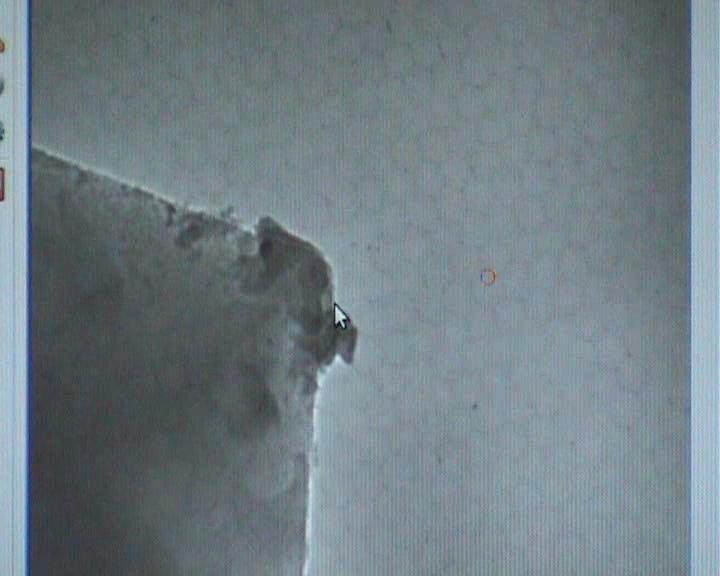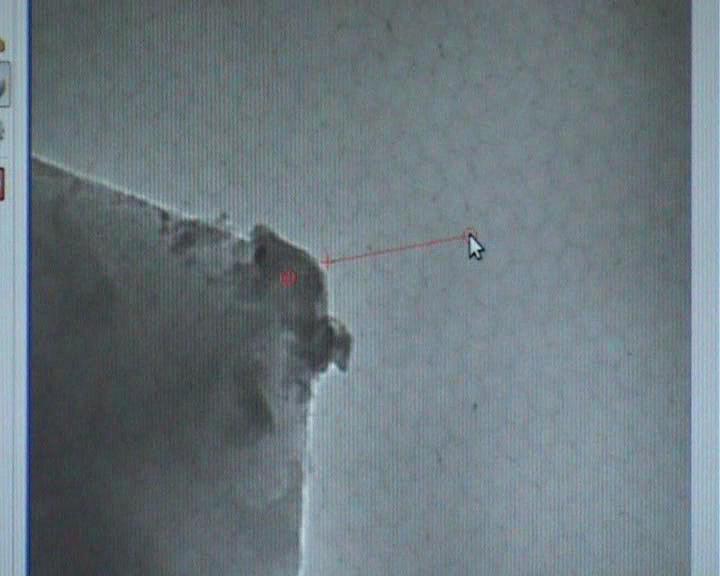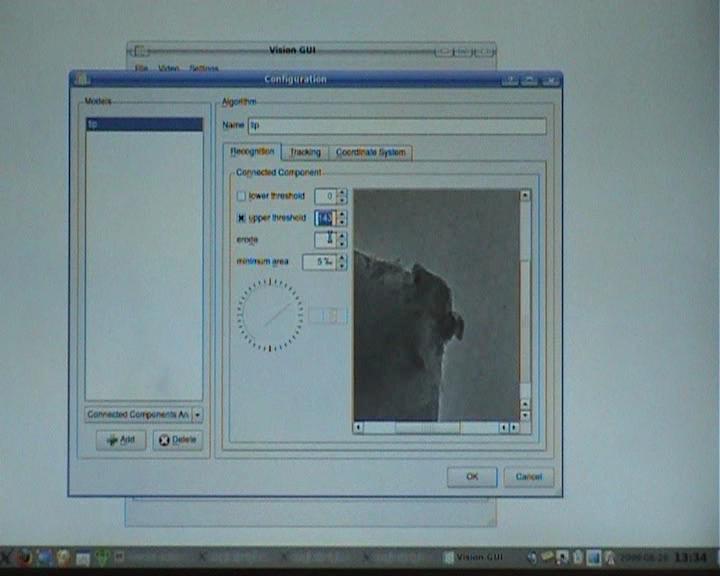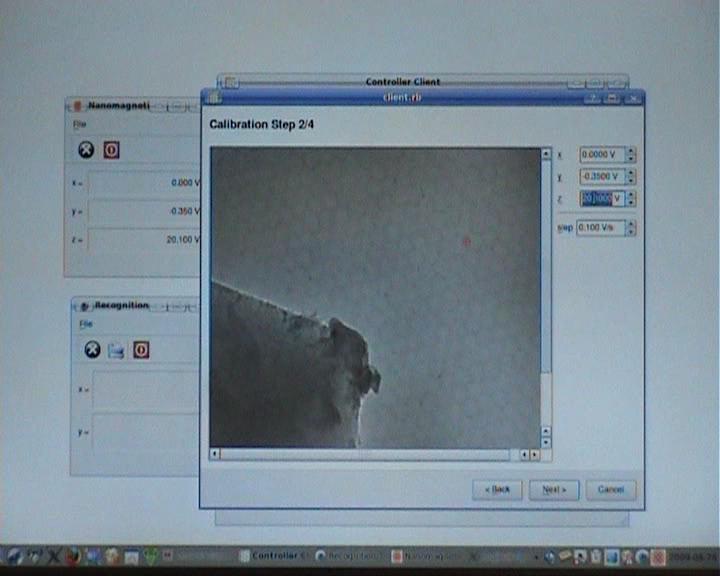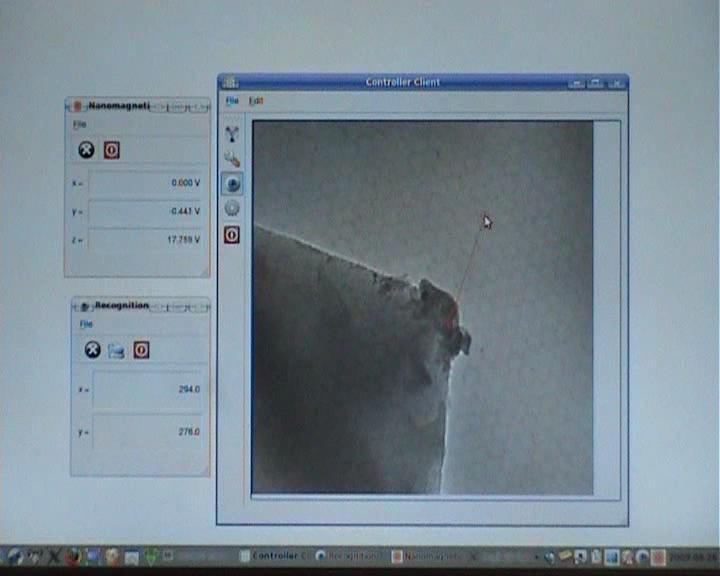TEM vision software
m (→See Also) |
m (→External Links) |
||
| Line 69: | Line 69: | ||
** J. P. Lewis: [http://www.idiom.com/~zilla/Work/nvisionInterface/nip.html Fast Normalized Cross-Correlation], Industrial Light & Magic | ** J. P. Lewis: [http://www.idiom.com/~zilla/Work/nvisionInterface/nip.html Fast Normalized Cross-Correlation], Industrial Light & Magic | ||
** S. Baker, I. Matthews: [http://www.ri.cmu.edu/pub_files/pub3/baker_simon_2004_1/baker_simon_2004_1.pdf Lucas-Kanade 20 Years On: A Unifying Framework], International Journal of Computer Vision, Vol. 56, No. 3, March, 2004, pp. 221-255. | ** S. Baker, I. Matthews: [http://www.ri.cmu.edu/pub_files/pub3/baker_simon_2004_1/baker_simon_2004_1.pdf Lucas-Kanade 20 Years On: A Unifying Framework], International Journal of Computer Vision, Vol. 56, No. 3, March, 2004, pp. 221-255. | ||
| + | |||
| + | {{Addthis}} | ||
[[Category:Projects]] | [[Category:Projects]] | ||
[[Category:Nanorobotics|*Nanorobotics]] | [[Category:Nanorobotics|*Nanorobotics]] | ||
Revision as of 13:01, 27 July 2009
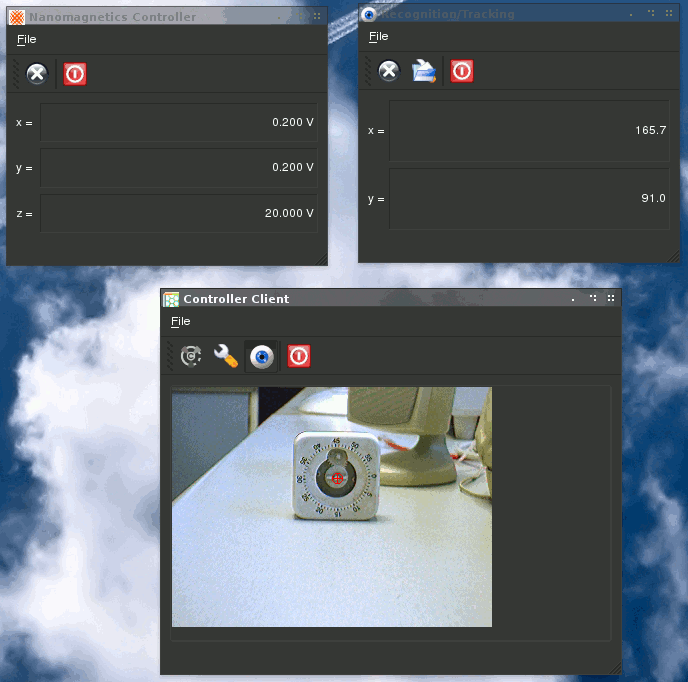 Prototype using Distributed Ruby for vision-based closed-loop control |
As part of the Nanorobotics project a TEM vision software was developed. The software makes use of a JEOL 3010 transmission electron microscope with a TVIPS FastScan-F114 camera which is an IIDC/DCAM-compatible firewire camera. The nano-indenter is controlled by a Nanomagnetics SPM controller (the old version of the controller can be accessed with a PCI-DIO24 card).
The software runs under GNU/Linux and it makes use of Damien Douxchamps' libdc1394 to access the camera and Warren Jasper's PCI-DIO24 driver to access the PCI-card which interfaces with the SPM controller.
The software was implemented in Ruby using Qt4-QtRuby, HornetsEye, libJIT, and a custom Ruby-extension to access the SPM controller via the PCI-DIO24 card. Distributed Ruby and multiple processes were used to work around the problem that Ruby-1.8 does not offer native threads.
The vision algorithms are configured using a separate program and the configuration is saved in a file using Ruby marshalling. A plugin-based architecture, which accepts plugins for recognition and tracking, was implemented which allows one to select and configure Normalised Cross-Correlation, Lucas-Kanade tracking, or Connected Component Analysis.
Contents |
Demonstration
Videos
Demonstration of TEM vision software including telemanipulation as well as closed-loop control using machine-vision feedback (also available as DivX3 videos configuration.avi (64 MByte), closed-loop.avi (44 MByte), and interaction.avi (19 MByte)) |
Setup procedure
Download
The software can be downloaded here: visiongui-0.2.tar.bz2
The software is implemented in Ruby. It uses HornetsEye (current development of version 0.32) and Qt4-QtRuby.
Future Work
Possible future work is
- port to Ruby-1.9 which has native threads
- integrate serial-port interface of JEOL TEM
- access USB-controls for shutter and gain of the TVIPS camera
- feature-based recognition and tracking (less sensitive to brightness changes)
- offset- and gain-compensation for camera image
See Also
External Links
- Hardware
- Software
- Related publications
- Jung-Me Park, C. G. Looney, Hui-Chuan Chen: Fast connected component labeling algorithm using a divide and conquer technique, 15th International Conference on Computers and their Applications, March, 2000, pp. 373-6
- J. P. Lewis: Fast Normalized Cross-Correlation, Industrial Light & Magic
- S. Baker, I. Matthews: Lucas-Kanade 20 Years On: A Unifying Framework, International Journal of Computer Vision, Vol. 56, No. 3, March, 2004, pp. 221-255.
